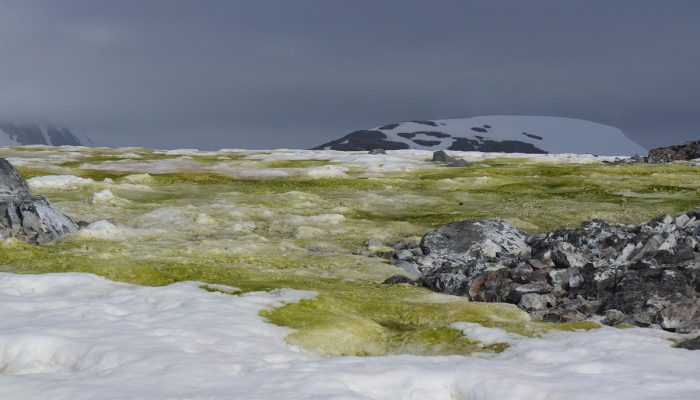
When I think of snow, I tend to either think about the bright white ski slopes in the mountains or the large white areas in the Arctic. However, natural phenomena can lead to colorful snow. Our Image of the Week shows snow can be green! Snow can also turn orange, pinkish, grey and even yellow… But where do these different shades of snow come from?
White
The most common color of snow is white (see Fig. 2). Snow generally appears white when it is pure snow, which means that it is only an aggregate of ice and snow crystals. When sunlight meets the snow surface, all frequencies of the sunlight are reflected several times in different directions by the crystals, leading to a white color of the snowpack.
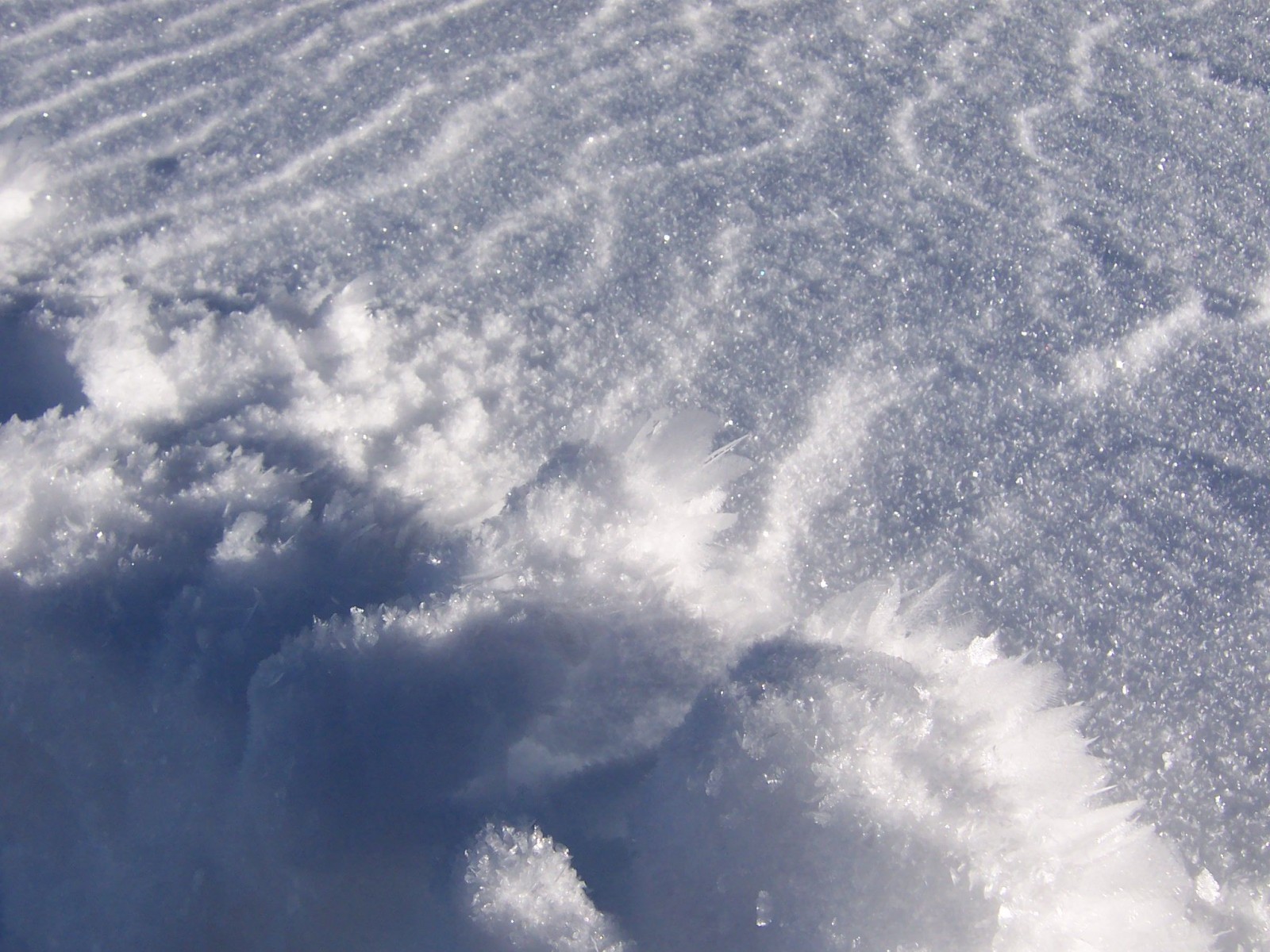
Fig. 2: Fresh powder snow, snow crystals [Credit: Introvert, Wikimedia Commons]
If other particles or organisms are present in the snow though, they can alter the color of the snow’s surface…
Green
Snow can obtain a green color if it is host to an algal bloom (see our Image of the Week). Depending on the wetness of the snow, sunlight conditions and nutrient availability, unicellular snow algae can develop and thrive on the snow. Although it is not clear exactly how fast snow algae grow, algae populations from temperate regions have been found to grow sixteen-fold in one day! As the algae population increases, the snow turns green as the algae reflect the green light back.
Red/Pink
The pink-red-colored snow, commonly called “watermelon snow”, can also be caused by snow algae (see Fig. 3). The snow algae responsible for the pink color are similar to the ones responsible for green color. However, these algae use pigments of red color to protect their cells from high sunlight and UV radiation damage during the summer. Just like how we use sunscreen to protect our skin! The red pigments come either from iron tannin compounds or, more commonly, from orange to red-pigmented lipids.
There is also another origin for pink snow: Penguin poo! Indeed, the krill they eat contain a lot of carotenoids that give their poo a red color.

Fig. 3: Watermelon snow streaks [Credit: Wikimedia Commons].
Yellow
Yellow snow is the result of a different process (and no, it is not from Penguin pee!). Fig. 4 shows the Sierra Nevada in Spain before and after dust transported from the Sahara settled down on the snow-covered mountain tops. The dust was lifted up from the Sahara desert and blown north before ending its trip in Spain.
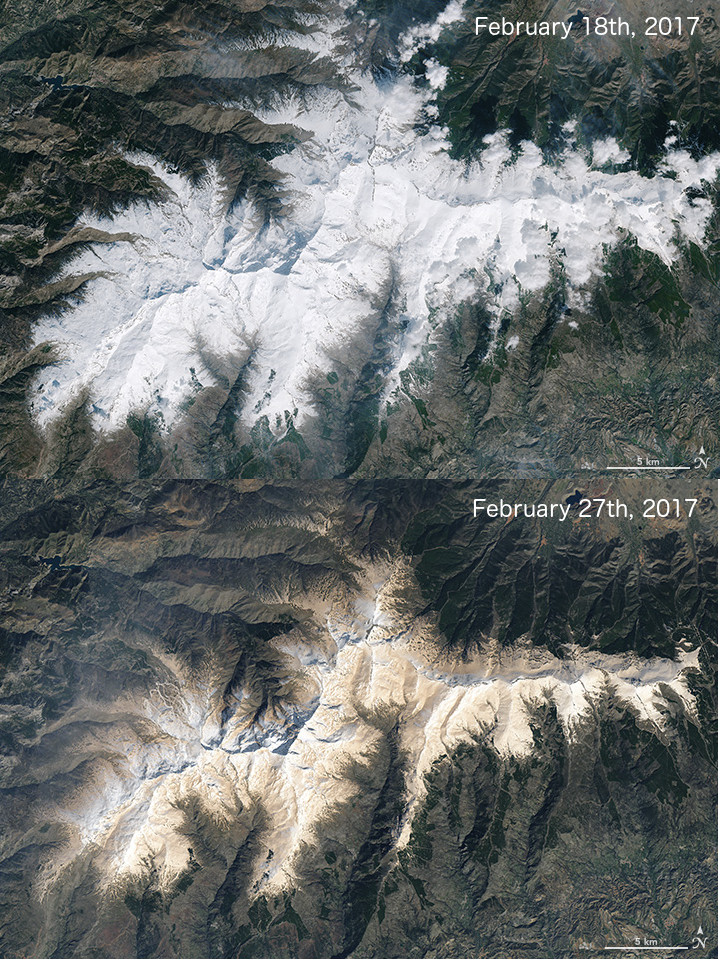
Fig. 4: Snow-covered Sierra Nevadas (Spain) before and after a dust deposition event [Credit: modified from NASA’s Earth Observatory]
Do these colors have an influence on snow cover?
In all cases of colored snow, the snow surface is darker than before. The darker surface absorbs more sunlight than a white surface, which causes the snow to melt faster… Therefore, although it looks artistic, colored snow is not necessarily healthy for the snow itself…
So, if you don’t like winter because everything is boring and white, just think about the variety of snow colors and try to look out for these special types! 🙂
Further reading
- Lutz, S. et al. (2016): The biogeography of red snow microbiomes and their role in melting Arctic glaciers. Nat. Commun. 7:11968, doi:10.1038/ncomms11968.
- Green Ice and Snow, NASA Earth Observatory
- The hunt for green snow: chasing the mystery of how snow algae bloom
- For biology amateurs: Wonderful Things: Don’t Eat the Pink Snow
- Image of the Week – The Journey of a Snowflake
- Image of the Week – Changes in Snow Cover
Edited by David Rounce

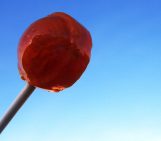
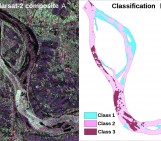
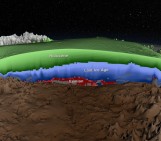
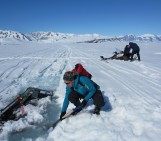
Simon
And fifty shades of grey in Iceland due to the deposition of volcanic ash!